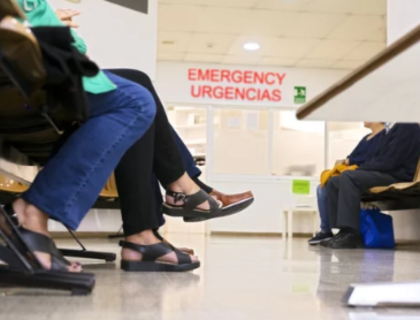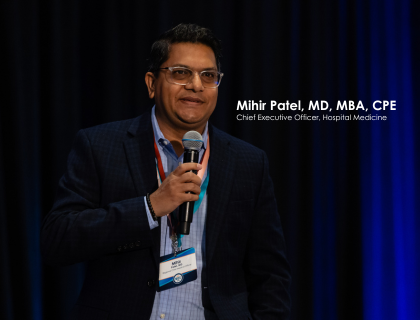May 15, 2019
A Physician Advisor’s Approach to Managing LOS


A year ago, I transitioned from a regional leadership role at Sound Physicians to my current role as a Medical Director of Advisory Services (MDAS). I have always been interested in driving hospital performance, and I quickly found that in my new role as an MDAS, I had many unique opportunities, especially with regards to length of stay management.
Length of stay is important for many reasons. Each unnecessary hospital day increases a patient’s risk for adverse drug events, CA-UTI, CLABSI, C. diff, falls, pressure ulcer, VAP & VTE. Excess mortality estimates for HACs range from 5 deaths per 1,000 cases to 150 deaths per 1,000 cases. Additional costs for HACs range from $600 to $48,000 per case1. Optimal LOS can improve patient safety, lower costs, and improve throughput, enabling doctors, nurses, and hospitals to serve more patients.
For those of you tasked with addressing length of stay, especially onsite physician advisors, I recommend you take a two-pronged approach that combines:
- Daily participation in multidisciplinary rounds (MDRs)
- Utilization of a Safe Transitions through Education and Planning (STEP) Team for complex patients
Attending daily MDRs is essential for the onsite advisor. I consider MDRs one of the most important things that I do every day. It is the most efficient means to gather data and help with the progression to the next site of care. Before our daily MDR, I’ve found it helpful to check-in with the care coordinator director and the care coordinator nurses to run the list with a focus on the patients who are approaching Geometric Mean Length of Stay (GMLOS) and any patients who are in observation status and approaching a second midnight. Engaging physicians one on one before the MDR is also effective.
During the MDRs, I spend a lot of time listening, but also educating clinicians, discussing documentation, and working to help the team remove barriers to discharge. As a physician advisor, I have the unique opportunity to serve as a conduit between teams, opening up communication and making sure that everyone sees the big picture. I tend to ask a lot of clarifying questions after doing my homework, so the questions are focused. This approach helps to builds trust and relationships with the physicians. I’ve been on the receiving end of the call before, and when you’re being interrupted while taking care of patients for something that’s already been documented in your note—well, that can detract from the quality of discussions.
Questions to think about in MDR:
To Physicians and APPs:
What is the plan for the day? What are the medical barriers to discharge? What is the expected discharge date? Are there any tests, test results, or consults pending? Can any tests and/or consults be done as an outpatient? Can you be sure to document what we discussed in your note?
To Care Coordinators:
What are the barriers to discharge? What is ALOS vs GMLOS? What is the patient’s readmission risk?
Are there any complex social issues that may be a barrier to discharge? Are there any possible service delays in the pipeline? If so, how can they be mitigated?
To Nurses:
What is the plan for today? Are there education needs? Are there any results, tests or consults pending? Are there any lines or drains? Does the patient really need the oxygen? Does the patient have any psychosocial or behavioral issues? How are the patient’s diet and mobility? Are there any possible service delays in the pipeline? If so, how can they be mitigated?
To Physical Therapists:
What are the needs upon discharge from the hospital? Can these needs be met at home?
Of course, there are other team members involved in the process including dieticians, palliative care, transitional care, CDI, and pharmacy. While these folks may not be rounding with us daily, their input is important, so communication is crucial for us to be aware of any additional discharge needs or barriers to discharge. Checking in with the care coordinator director and care coordinator nurses again in the afternoon helps identify additional barriers to discharge or breakdowns in the process that are preventing timely discharges. It’s also beneficial to follow up in the afternoon with clinicians about any pending issues from the MDR.
Committing to daily MDRs builds relationships and illuminates areas where there are opportunities for improvement. Most cases can be successfully managed through this process. To help with LOS outliers, I created a STEP team (Safe Transitions through Education and Planning). The STEP team’s role is to collaborate with long length of stay patients and families to provide education and focused interventions that promote healing, remove discharge barriers, and improve the patient experience across the continuum of care.
Our STEP team members include care coordination leadership, the physician advisor, the hospitalist medical director, clinicians, palliative care, care coordinators, bedside RNs, a representative from patient financial services, ethics and risk. Patients and families that may benefit from STEP team involvement include anticipated complex discharge and/or complex social needs with a LOS greater than five days, as well as patient’s with readmissions.
Not every member of the STEP team needs to be present at each meeting. The goals of each meeting should be determined in advance as well as identifying which members of the STEP team are most appropriate to help. The focus of the meeting can be discussions about barriers to discharge planning, service recovery, coordination and clarification of care. Sometimes the goal is to simply listen. It is important to listen to all sides and work together to focus on what is best for the patient and to develop a plan that takes all perspectives into account.
A discussion about length of stay wouldn’t be complete without mentioning the importance of data and analytics to help drive education and process improvements. We will have to save those details for a future post.
In closing, optimizing MDRs is a good place to start for driving performance. Consider forming a STEP Team to help with the complex patients. Communicate, investigate & escalate. Develop data driven action plans and best management processes for your hospital. Know the patients. Be helpful.
| Find out how Sound Advisory Services program can benefit your hospital or system. Contact us for more information. |
1Reference: https://www.ahrq.gov/professionals/quality-patient-safety/pfp/haccost2017.html



